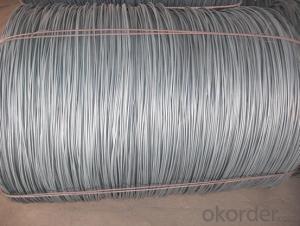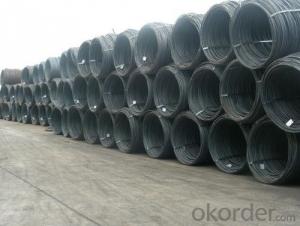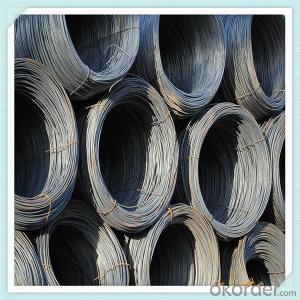Hot Rolled Wire Rod 5.5mm-14mm SAE1008 or SAE1006
- Loading Port:
- Tianjin
- Payment Terms:
- TT OR LC
- Min Order Qty:
- 25 m.t.
- Supply Capability:
- 200000 m.t./month
OKorder Service Pledge
OKorder Financial Service
You Might Also Like
Product Description:
OKorder is offering high quality Hot Rolled Steel I-Beams at great prices with worldwide shipping. Our supplier is a world-class manufacturer of steel, with our products utilized the world over. OKorder annually supplies products to European, North American and Asian markets. We provide quotations within 24 hours of receiving an inquiry and guarantee competitive prices.
Product Applications:
After hot-rolled the products shaped into coil and delivery as finished product, including round, square, rectangular, hexagonal and so on. Since most of the products are round, it is generally called wire rod. Carbon steel wire rod is widely used in construction and manufacturing. Carbon steel wire rod is mainly used for reinforcement of reinforced concrete and welded structure or reprocessed (roberts , nail, etc.) materials, especially used to produce wire drawing, welding electrode, nails, spring, electronic, precise machinery parts and so on.
Product Advantages:
OKorder's Steel I-Beams are durable, strong, and resist corrosion.
Main Product Features:
· Premium quality
· Prompt delivery & seaworthy packing (30 days after receiving deposit)
· Corrosion resistance
· Can be recycled and reused
· Mill test certification
· Professional Service
· Competitive pricing
Product Specifications:
Manufacture: Hot rolled
Grade: SAE1008 SAE 1006
Certificates: ISO, SGS, BV, CIQ
Diameter: 5.5mm, 6.5mm, 7mm,8mm,9mm,10mm,12mm,14mm, as per customer request
Packaging: Export packing, nude packing, bundled
Grade | Chemical Composition (%) | |||||
C | Mn | S | P | Si | B | |
SAE1008B | 0.10max | 0.32max | 0.045max | 0.040max | 0.30max | 0.0008min |
Mechanical properties | ||||||
Yield strength(N/mm2) | Tensile strength(N/mm2) | Elongation (%) | ||||
≥195 | 350-380 | ≥32 | ||||
FAQ:
Q1: Why buy Materials & Equipment from OKorder.com?
A1: All products offered byOKorder.com are carefully selected from China's most reliable manufacturing enterprises. Through its ISO certifications, OKorder.com adheres to the highest standards and a commitment to supply chain safety and customer satisfaction.
Q2: How do we guarantee the quality of our products?
A2: We have established an advanced quality management system which conducts strict quality tests at every step, from raw materials to the final product. At the same time, we provide extensive follow-up service assurances as required.
Q3: How soon can we receive the product after purchase?
A3: Within three days of placing an order, we will begin production. The specific shipping date is dependent upon international and government factors, but is typically 7 to 10 workdays.
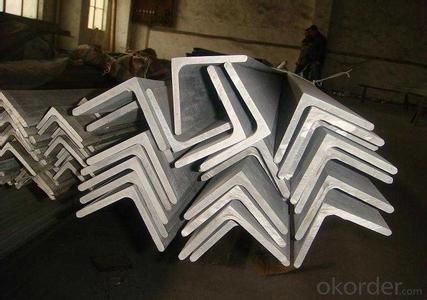
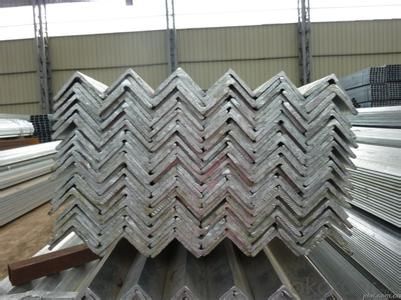
- Q: What are the different types of steel wire rod surface defect characterization methods?
- There are several different types of steel wire rod surface defect characterization methods, including visual inspection, microscopic examination, magnetic particle inspection, ultrasonic testing, eddy current testing, and dye penetrant testing. Each method has its own advantages and limitations, and the choice of method depends on the specific requirements and objectives of the inspection.
- Q: How is steel wire rod straightened and cut to length?
- Steel wire rod is straightened and cut to length using a combination of mechanical and automated processes. Firstly, the wire rod is passed through a series of straightening rolls that apply pressure to remove any bends or kinks, ensuring a straight and uniform shape. Once straightened, the rod is fed into a cutting machine equipped with circular blades or shears, which precisely cut it to the desired length. This process ensures that steel wire rod is efficiently straightened and cut to meet specific requirements in various industries.
- Q: What are the common impurities found in steel wire rod?
- The common impurities found in steel wire rod include sulfur, phosphorus, silicon, and carbon.
- Q: What are the common sizes of steel wire rod?
- The size of steel wire rods differs depending on the specific application and industry requirements. However, there are commonly utilized sizes of steel wire rods with diameters ranging from 5.5mm to 20mm. These sizes are typically employed in the production of various items, including wire ropes, springs, nails, screws, and reinforcement bars for construction purposes. Moreover, steel wire rods can also be found in larger diameters that exceed 20mm, which are suitable for heavy-duty applications such as prestressed concrete structures and suspension bridges. It is worth noting that the sizes of steel wire rods can vary by region and industry standards, so it is advisable to refer to the relevant specifications and standards for accurate information.
- Q: How are steel wire rods used in the construction of bridges?
- Steel wire rods are used in the construction of bridges for various purposes. One common use is as reinforcement in concrete structures. Steel wire rods, also known as rebars, are placed within the concrete to provide tensile strength and enhance the overall durability of the bridge. This is crucial as bridges need to withstand heavy loads, harsh weather conditions, and potential seismic events. Additionally, steel wire rods are also used in the construction of suspension bridges. In these types of bridges, the main load-bearing element is the cables. These cables are typically made from multiple strands of steel wire rods tightly wound together. The high tensile strength of the steel wire rods allows the cables to support the weight of the bridge deck, ensuring its stability and safety. Furthermore, steel wire rods are utilized in the fabrication of bridge cables for cable-stayed bridges. In this type of bridge, the cables are attached to the bridge deck and anchored to the ground or supporting towers. The steel wire rods are arranged in a specific pattern to form the cable system, providing the necessary strength and stability to the bridge. These cables are essential for transmitting the loads from the bridge deck to the supporting elements, enabling the bridge to span long distances. Overall, steel wire rods play a crucial role in the construction of bridges by providing reinforcement, enhancing tensile strength, and forming the load-bearing cables. Their high durability and ability to withstand heavy loads make them an ideal choice for ensuring the structural integrity and longevity of bridges.
- Q: What are the common standards for steel wire rod?
- The common standards for steel wire rod vary depending on the industry and the specific application. However, there are several widely recognized standards that are commonly followed in the steel wire rod manufacturing industry. One of the most widely accepted standards is the American Society for Testing and Materials (ASTM) standard. ASTM A510/A510M is the standard specification for general requirements for carbon and alloy steel wire rods and coarse round wire. This standard provides the general requirements for steel wire rods in terms of chemical composition, mechanical properties, dimensions, and tolerances. Another common standard is the International Organization for Standardization (ISO) standard. ISO 16120-2 specifies the general requirements for non-alloy steel wire rod for conversion to wire. This standard outlines the chemical composition, mechanical properties, and dimensions of non-alloy steel wire rods. In addition to these standards, there are also industry-specific standards for steel wire rod. For example, the automotive industry has its own set of standards that are followed by manufacturers to ensure the quality and performance of steel wire rods used in automotive applications. Overall, the common standards for steel wire rod include ASTM A510/A510M, ISO 16120-2, and industry-specific standards. These standards ensure that steel wire rods meet the necessary requirements for their intended applications and promote consistency and quality in the manufacturing process.
- Q: How is steel wire rod used in the manufacturing of wire for shopping baskets?
- Steel wire rod is an essential component in the manufacturing of wire for shopping baskets. It serves as the raw material that is transformed into wire through a series of manufacturing processes. The steel wire rod is first heated and then passed through a series of rollers to gradually reduce its thickness and increase its length. This process is known as drawing and it helps to improve the tensile strength and flexibility of the wire. Once the wire is drawn, it is typically coated with a protective layer to prevent corrosion and enhance its durability. This coating can be made of materials such as zinc or plastic. The coated wire is then shaped into the desired form, which in the case of shopping baskets, is usually a mesh-like structure. This shaping is done through a process called welding, where the wire is bent and joined at specific points to form the basket shape. The steel wire rod used in the manufacturing of wire for shopping baskets is chosen for its strength, resilience, and ability to withstand heavy loads. It ensures that the shopping baskets are sturdy enough to carry various items without bending or breaking. Additionally, the steel wire rod's corrosion resistance properties ensure that the wire and ultimately the shopping baskets have a longer lifespan, even when exposed to moisture or harsh environments. In summary, steel wire rod plays a crucial role in the manufacturing of wire for shopping baskets. It provides the raw material needed to produce the wire, which is then coated, shaped, and welded to create the final product. The strength, resilience, and corrosion resistance of the steel wire rod ensure that the shopping baskets are durable, long-lasting, and capable of withstanding the demands of everyday use.
- Q: How is steel wire rod used in the manufacturing of wire forms for power lines?
- Steel wire rod is an essential component in the manufacturing of wire forms for power lines due to its strength, durability, and conductivity. The wire rod is first processed through a series of manufacturing steps to transform it into wire forms suitable for power transmission purposes. To begin with, the steel wire rod is typically hot-rolled to achieve the desired diameter and shape. This process involves passing the rod through a series of rollers that apply pressure and heat, resulting in a long, continuous wire. The hot-rolled wire is then cooled to increase its strength and hardness. Next, the wire is usually subjected to a drawing process. This involves pulling the wire through a series of dies with progressively smaller openings, which reduces its diameter and increases its tensile strength. This step also helps to improve the wire's surface finish and overall quality. After the wire is drawn to the desired size, it undergoes various treatments to enhance its mechanical properties. These treatments may include annealing, where the wire is heated and slowly cooled to relieve internal stresses and improve ductility. The wire may also be galvanized or coated with a protective layer to enhance its corrosion resistance. Once the wire is properly processed and treated, it can be transformed into various wire forms used in power line applications. For example, the wire may be coiled to create transmission lines that carry electricity over long distances. It can also be formed into overhead conductors or ground wires that are suspended on power line towers to transmit electrical energy. In addition to its strength and durability, steel wire rod offers excellent electrical conductivity, making it an ideal material for power line applications. The high conductivity allows for efficient transmission of electricity across the wire forms, minimizing energy losses during transmission. Overall, steel wire rod plays a crucial role in the manufacturing of wire forms for power lines by providing the necessary strength, durability, and conductivity required for efficient and reliable power transmission.
- Q: How is the machinability of steel wire rod determined?
- The machinability of steel wire rod is determined through various factors and testing methods. One of the key factors is the composition of the steel, including the presence of alloying elements such as carbon, manganese, sulfur, phosphorus, and silicon. These elements can significantly affect the machinability of the steel. Another important factor is the microstructure of the steel, which is influenced by the manufacturing process, such as hot rolling or cold drawing. The microstructure determines the hardness, strength, and grain size of the steel, all of which can impact its machinability. To determine the machinability of steel wire rod, several testing methods are employed. One common method is the turning test, where a cutting tool is used to remove material from the wire rod while measuring various parameters such as cutting forces, tool wear, surface finish, and chip formation. These measurements can provide insights into the ease of machining the steel. Other tests may include drilling, milling, or tapping the wire rod to assess its machinability characteristics. These tests evaluate parameters such as tool life, cutting speed, feed rate, and surface roughness. The results of these tests help in determining the suitability of the steel wire rod for specific machining operations. Additionally, industry standards and guidelines, such as the American Iron and Steel Institute (AISI) recommendations, provide machinability ratings for different types of steel. These ratings are based on empirical data and can be used as a general guideline when selecting steel wire rod for machining applications. Overall, the machinability of steel wire rod is determined by a combination of factors including composition, microstructure, and various testing methods. By considering these factors, manufacturers and end-users can select the most suitable steel wire rod for their machining requirements.
- Q: What are the advantages of using galvanized steel wire rod?
- There are several advantages of using galvanized steel wire rod. Firstly, galvanized steel wire rod has a high level of corrosion resistance. This is due to the zinc coating that is applied to the surface of the wire rod. The zinc acts as a protective barrier, preventing rust and corrosion from forming on the steel. This makes galvanized steel wire rod suitable for outdoor applications, where it may be exposed to moisture and harsh weather conditions. Secondly, galvanized steel wire rod is incredibly durable. The zinc coating adds an extra layer of protection to the steel, making it more resistant to wear and tear. This means that galvanized steel wire rod can withstand heavy loads and is less likely to break or deform under stress. This durability makes it ideal for use in construction, fencing, and other demanding applications. Another advantage of galvanized steel wire rod is its versatility. It can be easily bent, twisted, and cut to suit various applications. This makes it a popular choice for a wide range of industries, including agriculture, automotive, and manufacturing. Galvanized steel wire rod can be used for making fences, wire mesh, springs, and various other products. Additionally, galvanized steel wire rod is cost-effective. While the initial cost of galvanizing the wire rod may be higher compared to other types of steel, the long-term benefits outweigh the upfront investment. The corrosion resistance and durability of galvanized steel wire rod mean that it requires less maintenance and has a longer lifespan, reducing the need for frequent replacements. Lastly, galvanized steel wire rod is environmentally friendly. The zinc coating used in the galvanizing process is non-toxic and recyclable. This means that galvanized steel wire rod can be easily recycled at the end of its lifespan, reducing waste and minimizing its impact on the environment. In conclusion, the advantages of using galvanized steel wire rod include high corrosion resistance, durability, versatility, cost-effectiveness, and environmental friendliness. These qualities make it a preferred choice for various applications in different industries.
Send your message to us
Hot Rolled Wire Rod 5.5mm-14mm SAE1008 or SAE1006
- Loading Port:
- Tianjin
- Payment Terms:
- TT OR LC
- Min Order Qty:
- 25 m.t.
- Supply Capability:
- 200000 m.t./month
OKorder Service Pledge
OKorder Financial Service
Similar products
Hot products
Hot Searches
Related keywords
